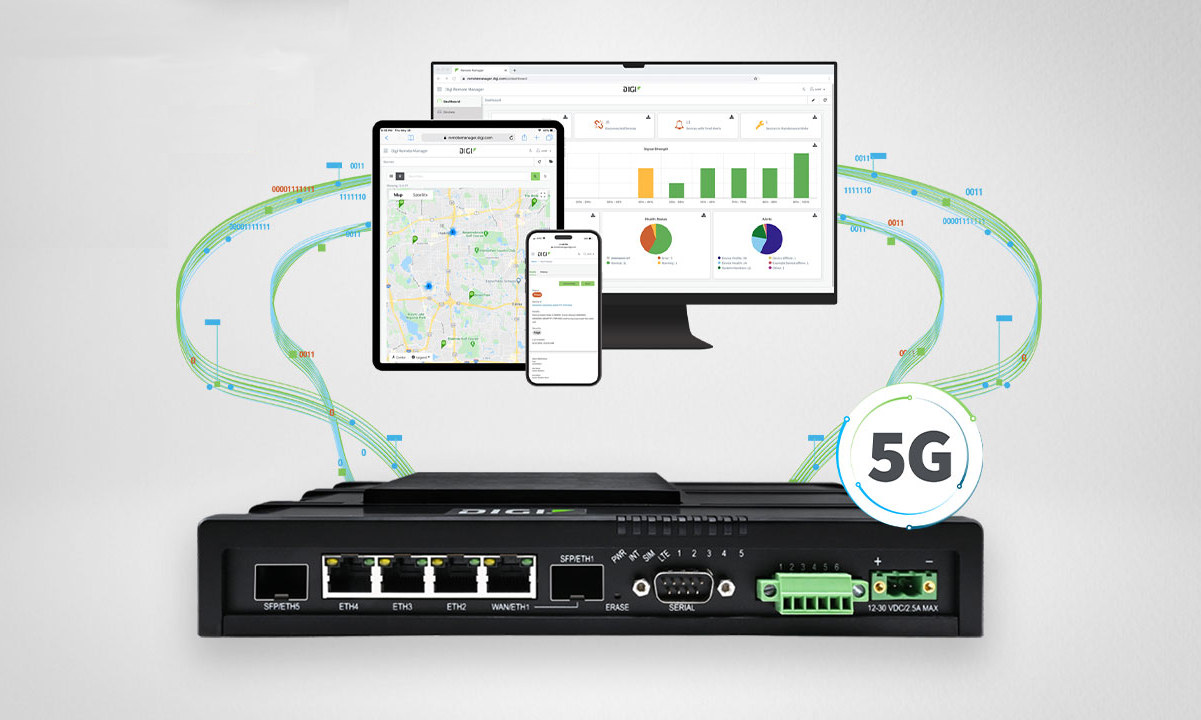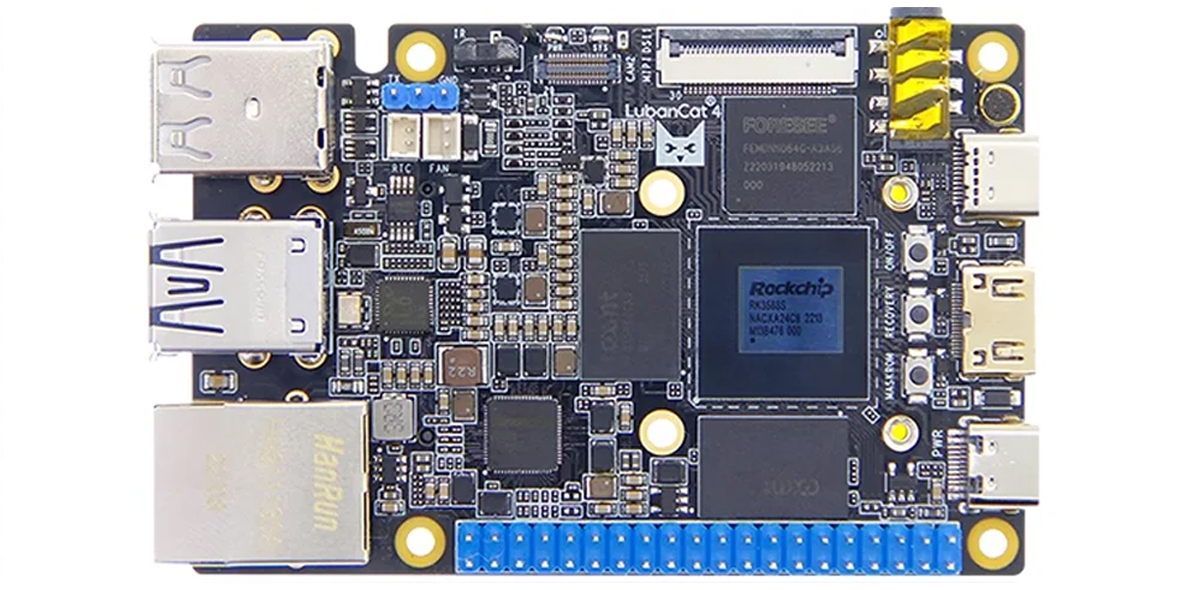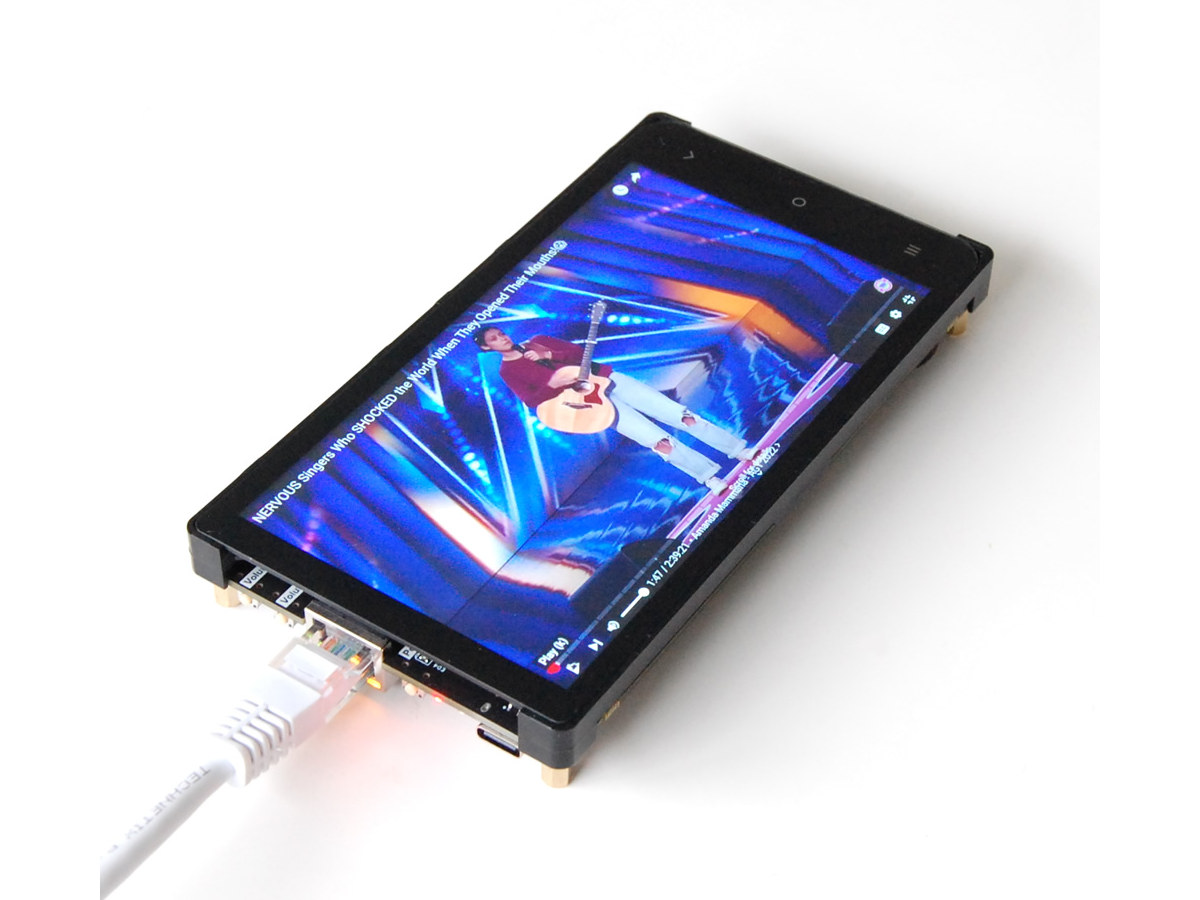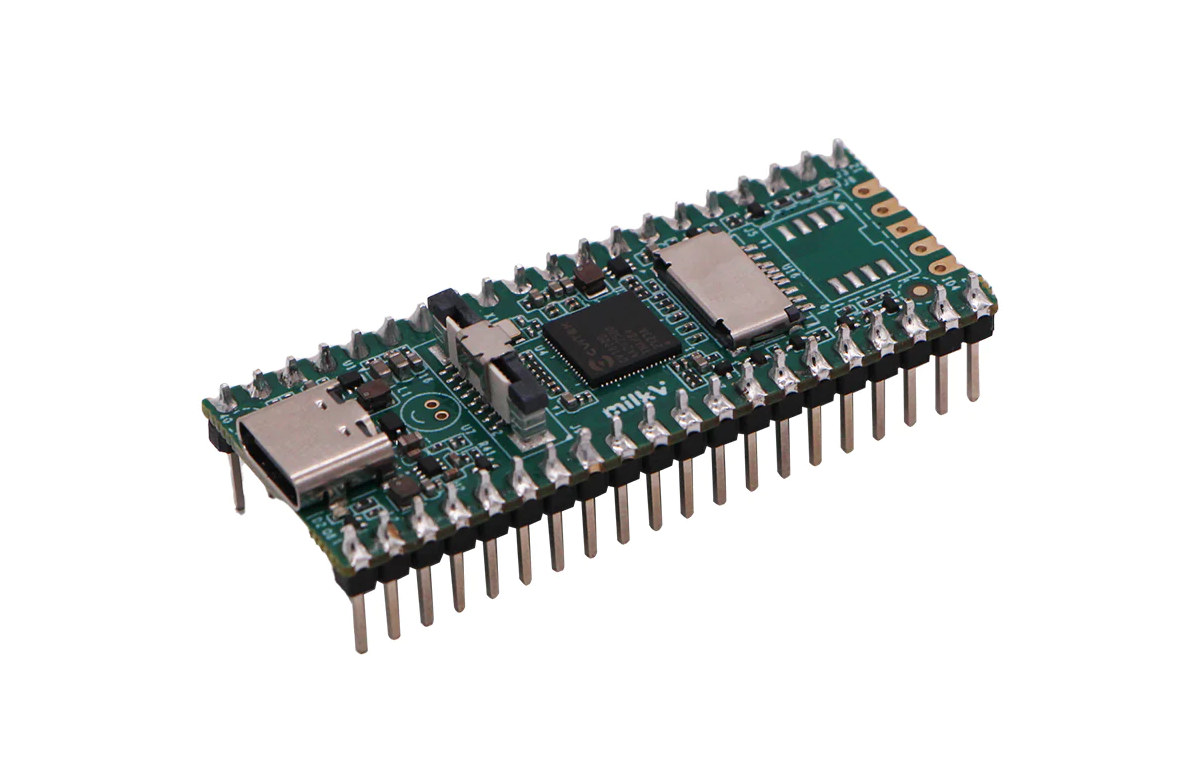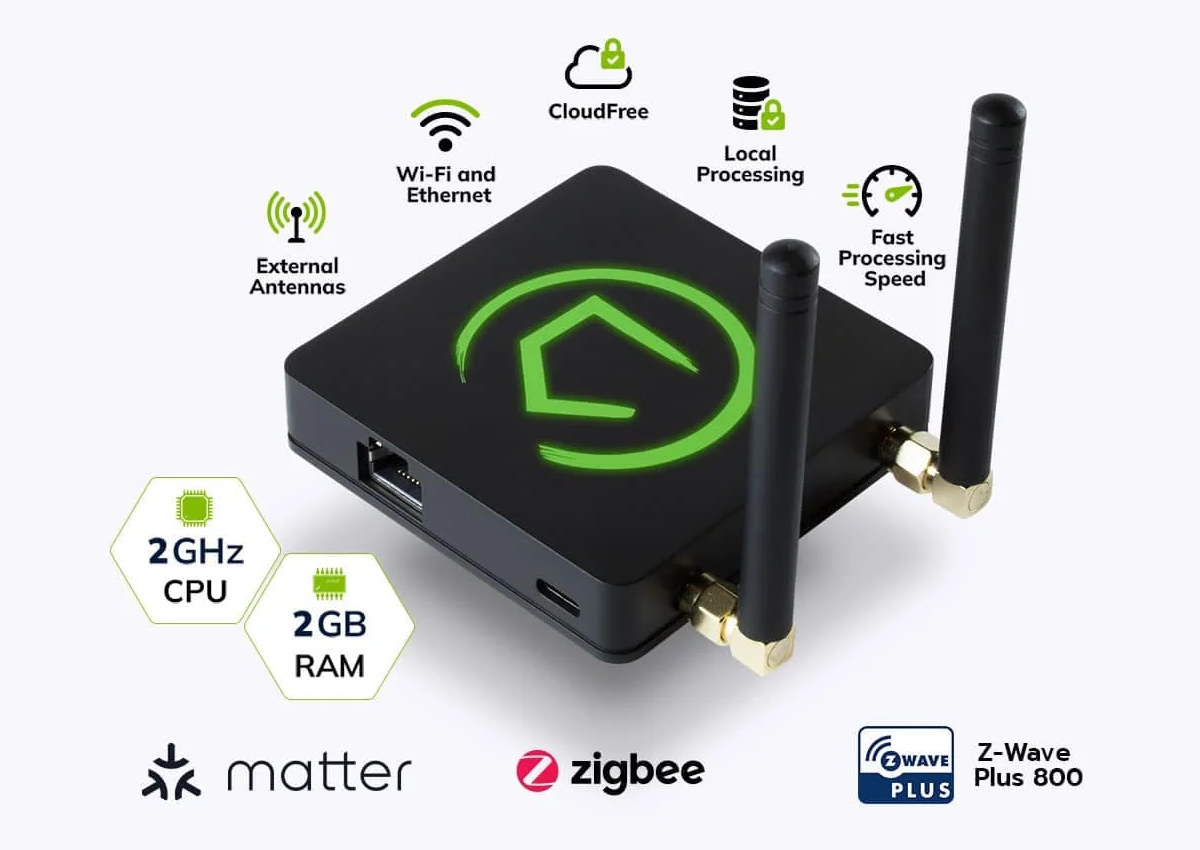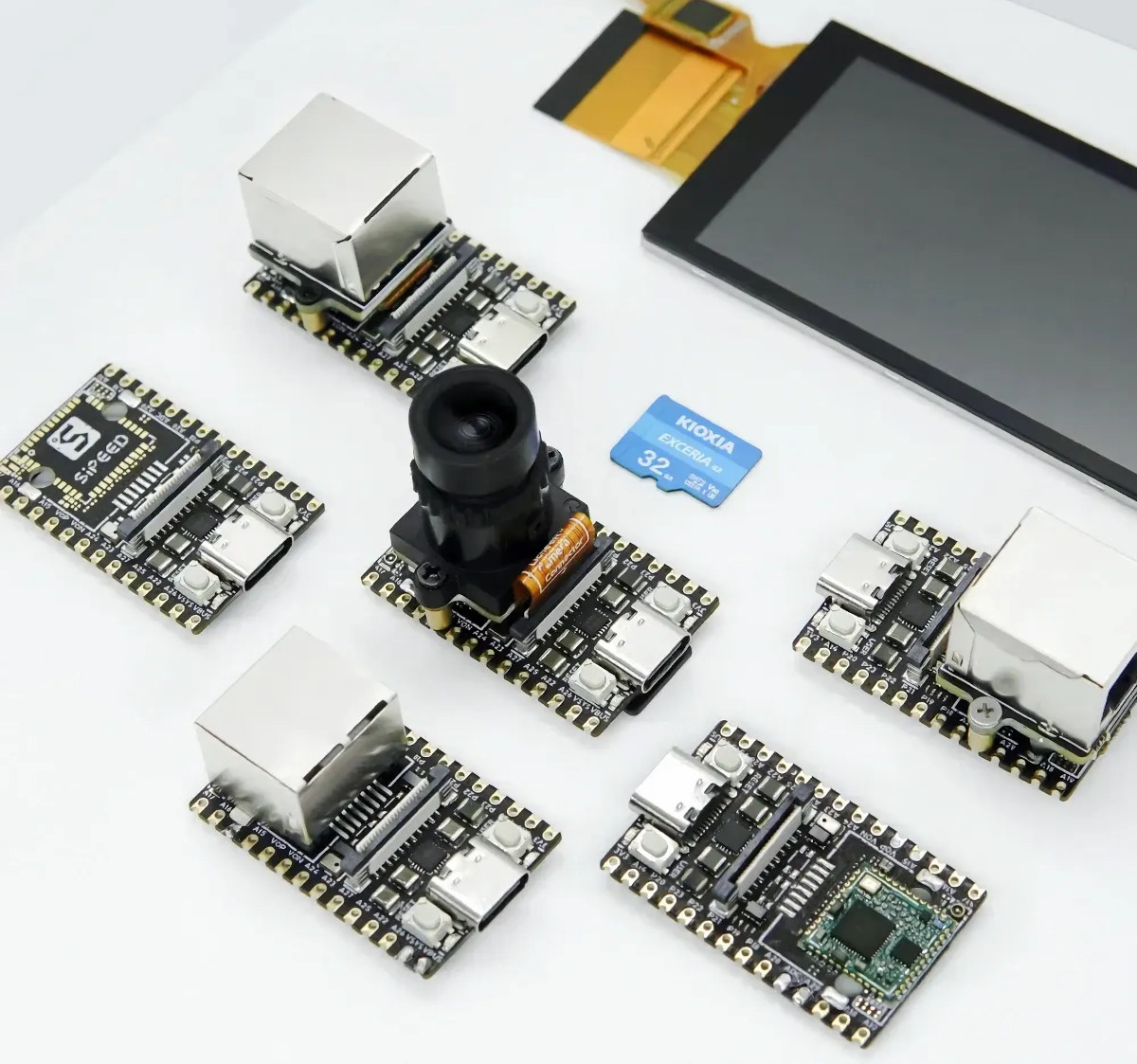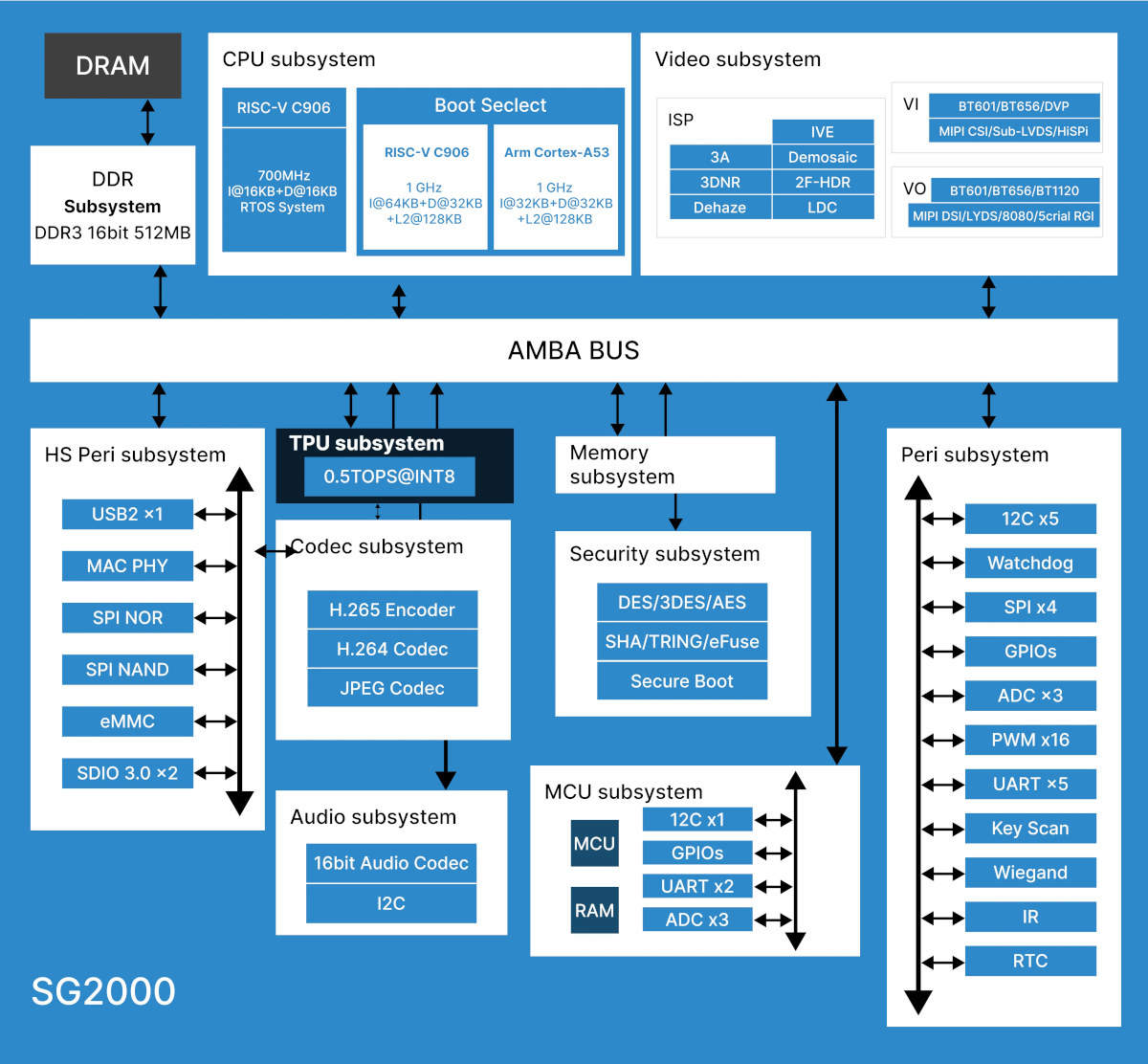Digi IX40 is a 5G edge computing industrial IoT cellular router solution designed for Industry 4.0 use cases such as advanced robotics, predictive maintenance, asset monitoring, industrial automation, and smart manufacturing. The IIoT gateway is based on an NXP i.MX 8M Plus Arm processor running a custom Linux distribution, and besides 5G and 4G LTE cellular connectivity, offers gigabit Ethernet networking with 6 RJ45 and SFP ports, GNSS for geolocation and time, as well as digital and analog I/Os and an RS232/RS422/RS485 serial interface supporting Modbus. Digi IX40 specifications: SoC – NXP i.MX 8M Plus Arm Cortex-A53 processor @ 1.6 GHz with 2.3 TOPS NPU System Memory – 1GB RAM Storage – 8GB eMMC flash Wireless Cellular IX40-05 5G NSA, 5G SA, 4G LTE-ADVANCED PRO CAT 19 5G NR bands – n1, n2, n3, n5, n7, n8, n12, n13, n14, n18, n20, n25, n26, n28, n29, n30, n38, n40, n41, […]
EmbedFire LubanCat 4 card computer – A Rockchip RK3588S dev board with a mini PCIe socket for WiFi or 4G LTE
Launched by Yehuo Electronic EmbedFire LubanCat 4 card computer or LubanCat 4 in short, is a Rockchip RK3588S SBC that packs quite a lot of features in an 85x56mm form factor with Ethernet, USB, mini PCIe, HDMI 2.1, SIM & microSD card holder, and more. The board comes with up to 16GB of RAM and 128GB of eMMC flash. It comes with a Gigabit Ethernet port, five USB ports (including one USB-C), a built-in microphone, multiple audio inputs and outputs, a 40-pin Raspberry Pi compatible expansion header, and supports HDMI input through an adapter connected to a MIPI CSI port. EmbedFire LubanCat 4 card computer specifications: SoC – Rockchip RK3588S CPU – Octa-core processor with 4x Cortex-A76 cores @ up to 2.2-2.4 GHz, 4x Cortex-A55 cores @ up to 1.8 GHz GPU – Arm Mali-G610 GPU with OpenGL ES 3.2, OpenCL 2.2, and Vulkan 1.2 support VPU – 8Kp60 video decoder […]
Vivid Unit is a low-profile Rockchip RK3399 SBC with an integrated touchscreen display
UUGear’s Vivid Unit is a low-profile SBC with an integrated 5.5-inch 1280×720 touchscreen display powered by the older Rockchip RK3399 hexa-core Cortex-A72/A53 SoC coupled with 4GB RAM and a 32GB eMMC flash. The board also comes with gigabit Ethernet and WiFi 4 connectivity, supports M.2 NVMe storage, offers HDMI output and a MIPI CSI camera input, integrates a speaker and a stereo microphone, and allows for expansion through a 40-pin GPIO header and other headers for ADC and USB. Vivid Unit specifications: SoC – Rockchip RK3399 CPU – Hexa-core big.LITTLE processor with 2x Arm Cortex-A72 cores up to 1.8GHz, 4x Arm Cortex-A53 cores up to 1.4GHz GPU – Arm Mali-T860MP4 GPU AI accelerator – 6 TOPS NPU System Memory – 4GB LPDDR4 Storage 32GB eMMC flash M.2 socket for NVMe SSD Display – 5.5-inch touchscreen display with 1280×720 resolution Video Output – HDMI port Camera Input – MIPI CSI camera […]
Duo 256M is a compact SBC based on SG2002 multi-architecture SoC
Duo 256M is a small board powered by SOPHGO SG2002 multi-architecture Arm/RISC-V/8051 SoC with 256MB of on-chip RAM and a 1 TOPS NPU, a microSD card for storage, a camera connector, a USB-C port for power and programming, and two headers for GPIO expansion. We covered the SOPHGO SG2002 (and SG2000) Arm+RISC-V+8051 AI SoC earlier this month saying a couple of boards were expected very soon. We’ve already covered Sipeed LicheeRV Nano with optional Ethernet or WiFi 6, and now we’ll look at the Duo 256M designed by Milk-V Technology in more detail since it’s available now. Duo 256M specifications: SoC – SOPHGO SG2002 Main core – 1GHz 64-bit RISC-V C906 or Arm Cortex-A53 core (selectable) Minor core – 700MHz 64-bit RISC-V C906 core Low-power core – 25 to 300MHz 8051 MCU core NPU – 1 TOPS INT8, supports BF16 Integrated 256MB DDR3 (SiP) Storage MicroSD card slot 32Gbit NAND […]
ODROID-M1S review – Part 2: Ubuntu 20.04 benchmarks and features testing
Over one month has passed since our unboxing and quick Ubuntu 20.04 testing of the ODROID-M1S SBC and we’ve now had time to test more features and run benchmarks using the official Ubuntu 20.04.6 LTS release from Hardkernel. One user mentioned Ubuntu 22.04 is supported, but that’s supported by a third party and we used the official image for testing.
Our test results will show the performance and supported features of the Rockchip RK3566-powered ODROID-M1S SBC when running Ubuntu 20.04. Read on to find out how well the board works.
ODROID-M1S benchmarks
Let’s start benchmarking the ODROID-M1S with Thomas Kaiser’s sbc-bench.sh script:
Hubitat Elevation Model C-8 Pro Home Automation Hub supports Zigbee, Z-Wave, and Matter devices
Hubitat has recently launched the Elevation Model C-8 Pro Home Automation hub with a Z-Wave 800 radio, a Zigbee 3.0 radio, Wi-Fi, and Ethernet connectivity that upgrade on the earlier C-8 model with more memory (2GB RAM), and a faster 2.0 GHz Cortex-A55 processor. I’ve never written about Hubitat Smart Home solutions, but they seem to have an active community of users, so I’ll check out their latest Elevation Model C-8 Pro gateway and what they have to offer in terms of software and device support. Hubitat Elevation Model C-8 Pro specifications: SoC – Arm Cortex A55 processor @ 2.016 GHz (that could be the Amlogic S905X3 found in the ODROID-C4 SBC) System Memory – 2GB RAM Storage – TBD Connectivity Ethernet RJ45 port WiFi Z-Wave 800 radio Zigbee 3.0 radio Matter support 2x external antennas Power Supply – 5V via USB-C port Dimensions – 8.2 x 7.5 x 1.7 […]
LicheeRV Nano – A low-cost SG2002 RISC-V and Arm camera and display board with optional WiFi 6 and/or Ethernet
When I wrote about the SOPHGO SG2002 (and SG2000) RISC-V, Arm, and 8051 AIoT processor yesterday, I noted several boards were in development, but I had not noticed the Sipeed LicheeRV Nano (Beta) was already available for sale, so let’s have a closer look. It’s an inexpensive, tiny camera and display board running Linux with optional support for WiFi 6 and 10/100M Ethernet connectivity which somewhat reminds me of the Breadbee SBC based on MStar MSC313E Camera SoC. Sipeed also provides accessories such as a camera module and a touchscreen display to quickly get started. LicheeRV Nano specifications: SoC – SOPHGO SG2002 Main core – 1GHz 64-bit RISC-V C906 or Arm Cortex-A53 core (selectable) Minor core – 700MHz 64-bit RISC-V C906 core Low-power core – 25 to 300MHz 8051 MCU core NPU – 1 TOPS INT8, supports BF16 Integrated 256MB DDR3 (SiP) Storage – MicroSD card slot and SD NAND […]
SOPHGO SG2000/SG2002 AI SoC features RISC-V, Arm, and 8051 cores, supports Android, Linux, and FreeRTOS
SOPHGO SG2000 and SG2002 are new SoCs featuring a bunch of RISC-V and Arm cores capable of running Linux, Android, and FreeRTOS simultaneously, and to maximize the fun an 8051 MCU core is also in the mix along with a 0.5 TOPS (SG2000) or 1 TOPS (SG2002) AI accelerator. More specifically we have one 1GHz C906 64-bit core capable of running Linux, one 1GHz Arm Cortex-A53 for Linux or Android, another 700 MHz C906 RISC-V core for FreeRTOS, and a 300 MHz 8051-core for real-time I/Os, as well as 256MB or 512MB SiP DRAM. The chip is designed for AIoT applications such as Smart IP cameras, facial recognition, and smart home devices. SOPHGO SG2000/SG2002 specifications: CPU cores 1x C906 64-bit RISC-V core @ 1GHz 1x C906 64-bit RISC-V core @ 700MHz 1x Arm Cortex-A53 core @ 1GHz MCU – 8051 8-bit microcontroller core @ 25 to 300 MHz with 6KB […]


